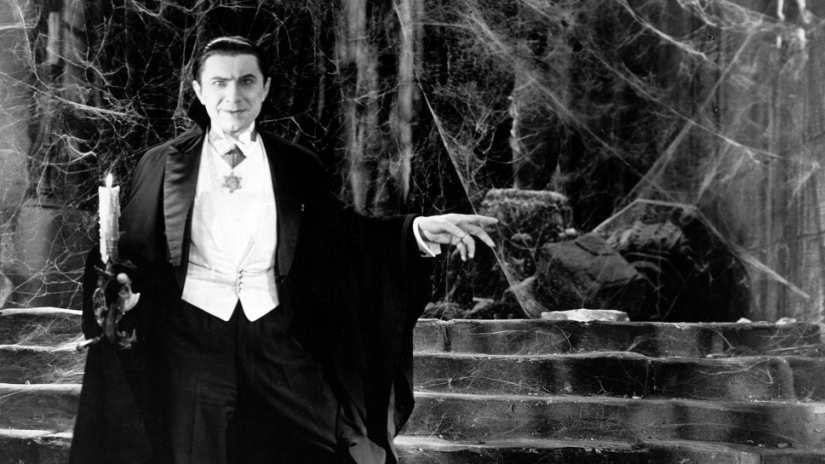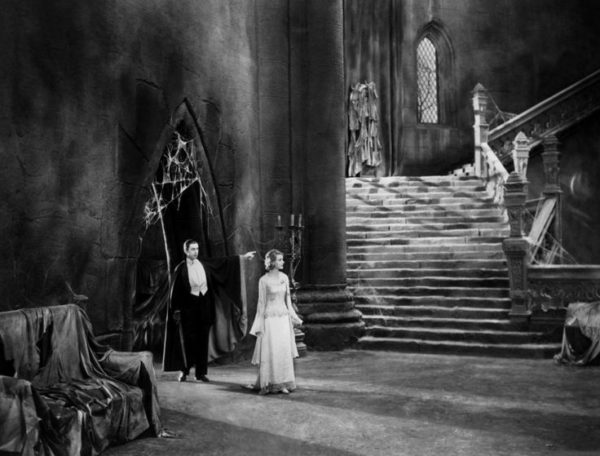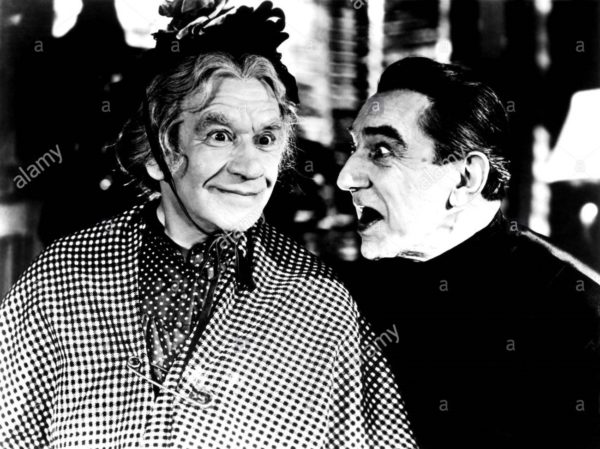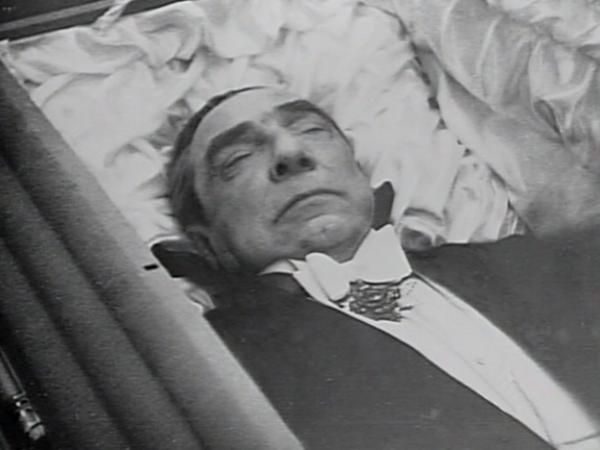AAA Profile: Bela Lugosi
“Welcome to my house. Enter freely and of your own will.” From this first intonation of his opening line in the 1931 horror classic “Dracula”, Bela Lugosi was a star. Suave and elegant, with opera cape, top hat and cane, sans the fangs and gore, Lugosi’s portrayal of Bram Stoker’s malignant villain virtually singlehandedly vaulted the vampire from grotesque to sex symbol. His sophisticated appearance and exotic eastern European accent set him in the firmament of Hollywood glitterati, indelibly linked with his undead character for all time.
Yet Lugosi’s was a shooting star, which burnt hot and brightly, but soon fell to earth. His identification with the role of Dracula was so great, so complete in the public consciousness, that he could do little else. He played that role but twice; after starring in the 1931 film Lugosi only officially donned the Dracula duds again in 1948, in “Abbott and Costello Meet the Wolf Man”, but somehow most parts he took seemed to include the trademark cape, even when there was no earthly reason why it should.
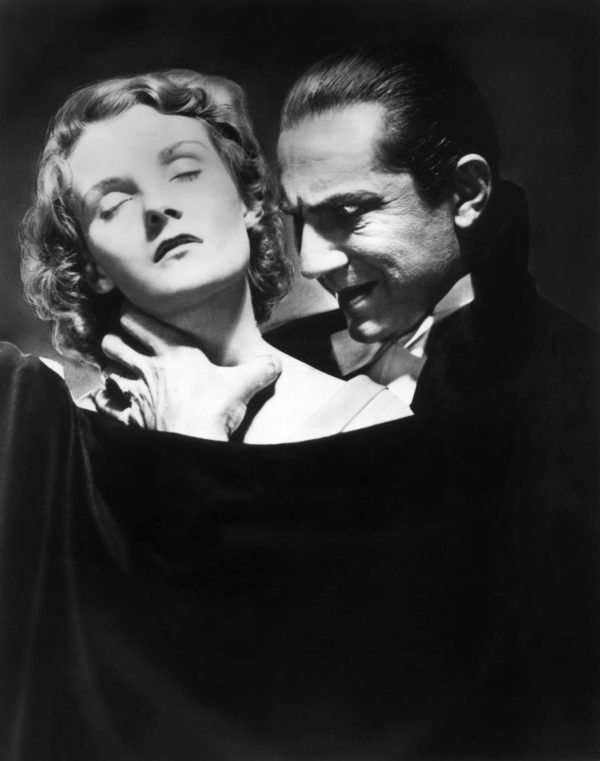
Vampirism in a simpler time: Lugosi wore no fangs, never visibly bit anyone; audiences never saw a drop of blood, yet he’s still the single actor most identified with Dracula
He also played a faux vampire (an actor trying to trick a murderer into revealing himself) in “Mark of the Vampire” (1935), and the real thing (but not Dracula per se) in “Return of the Vampire” (1943). Things reached their cinematic nadir with 1952’s “Old Mother Riley Meets the Vampire”, where he played opposite an actor in drag in the title role, but long before this Lugosi had become a caricature of himself, appearing in his Dracula persona at trade shows, store openings and on television, once as Santa’s sidekick.
Lugosi played a variety of supporting roles in horror films as well, including the aptly-named Bela the gypsy in 1941’s “The Wolf Man” with Lon Chaney, several stints as Frankenstein’s assistant Ygor (“Son of Frankenstein”, 1939; “Ghost of Frankenstein” 1942) and once as the Monster himself, in 1943’s “Frankenstein Meets the Wolf Man”. His lead performances in schlock horror films such as “White Zombie” (1932), “The Black Cat” (1934), “The Invisible Ray” (1936), “The Gorilla” (1939) and “The Devil Bat” (1941) only further cemented Lugosi’s growing reputation as a hack and has-been. Even small parts in acclaimed films such as 1939’s “Ninotchka” with Greta Garbo couldn’t redeem him. But Lugosi was an accomplished stage actor with a wide range, somewhat limited in the US by his thick accent and ethnic looks, which ruled him out for many parts he would have been qualified to play.
In the early 1950s, suffering from acute back pain and an addiction to prescription pain killers that came with it, Lugosi met budding director Ed Wood. Lugosi had been an idol of his, and Wood was appalled at the virtual poverty of the down-on-his-luck icon’s circumstances. He promptly “starred” him in two of his films, as the off-screen narrator in 1953’s gender-bending “Glen or Glenda?” and as a mad scientist in “Bride of the Monster” in 1955. Their relationship has been depicted in the 1994 Tim Burton film “Ed Wood”, starring Johnny Depp, with Martin Landau playing Lugosi. Impromptu test footage shot by Wood in 1955, of Lugosi in his trademark cape mugging for the camera in a cemetery, was cut into “Plan 9 from Outer Space”, which became Lugosi’s final film, released three years after his death.
The end came for Lugosi with a heart attack in 1956, at his home in Los Angeles. At the insistence of his wife and son, he was buried in his Dracula cape and medallion, the very symbol of the role, impossible to shed, which had both made and marred him.
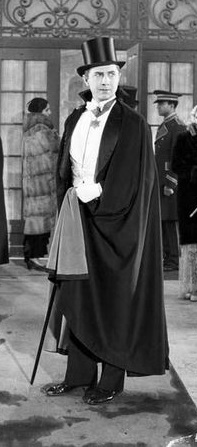
In top hat, opera cape and tails, Lugosi single-handedly crafted the image of the vampire as elegant ghoul-about-town
Born Bela Blasko in Lugos, Romania (then Hungary) on 20 October 1882 at 3:30 PM local time (Rodden rating A), Lugosi began his acting career in the early twentieth century, starting with light opera and farce in Hungary before moving on to Shakespeare and serious dramatic roles. He served in the Austro-Hungarian infantry in World War I, then emigrated to Germany in 1918 and to America in 1920. He was not naturalized as an American citizen until June of 1931, four months after “Dracula” premiered.
Asteroid Bella, homonym for Bela, appears in Lugosi’s nativity at 20 Virgo, from where it conjoins Uranus at 21 and the Descendant at 13 Virgo, squares the MC at 22 Sagittarius, and is sesquiquadrate the 4 Aquarius Moon. Contacts from one’s own PNAs to the Sun, Moon, Mercury (which rules the naming function) or the angles are most common, with Bella making three such links. Bella with Uranus also suggests Lugosi’s exotic, foreign quality, at least for American audiences. Bella further conjoins asteroid Actor at 14 Virgo, defining his profession; Actor is also semisquare the Sun, making the dramatic arts a part of Lugosi’s core identity, his image of himself.
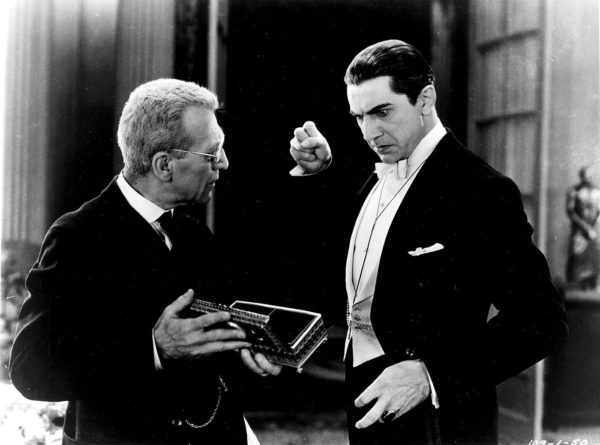
Lugosi faces off with his nemesis, Dr. Van Helsing, played by Edward Van Sloan, who tests his theory of Dracula’s vampiric nature by presenting a mirrored box – he casts no reflection
Asteroid Blazhko, for Blasko, his birth surname, also fits the pattern; at 4 Scorpio it conjoins both Mercury at 2 and Mars at 11 Scorpio, and is exactly squared the Moon, representing family inheritance, which the surname surely is. Blasko with Mercury accents the uniqueness of his voice, while the contact with Mars suggests sexual heat or attractiveness. Even without Blaszko between them, Mercury with Mars can produce a sexually alluring voice and manner; with Blazhko included, this becomes a defining feature.
Asteroid Lugosi, the stage name he chose in honor of Lugos, the town of his birth, is actually named for him; at 10 Aries it is closely semisquare Saturn at 24 Taurus, appropriate for a career choice. It is also exactly trine natal Venus at 10 Sagittarius, possibly one source of his mesmerizing attraction for women (up to 90% of his fan mail came from females) and forms a Grand Trine with asteroid Anubis, named for the ancient Egyptian deity governing funerary rites, an appropriately macabre element for the mix. This becomes a Kite with Lugosi’s opposition to asteroid Vampilov at 16 Libra, forming its “string” and driving or guiding the pattern. Vampilov is not only the closest celestial referent to “vampire”, the role Lugosi is most remembered for, but when broken into its component parts is a reasonable match for “vamp love”, giving us another clue to Lugosi’s power to romanticize the part.
Dracula itself can be seen in asteroid Drago, the dragon. The historic figure from which Stoker crafted his count was actually a prince of Wallachia, Vlad IV the Impaler, known as Dracula. He got this name from his father Vlad III, known as Dracul for his induction into a prestigious knighthood of the Holy Roman Empire, the Order of the Dragon. Thus Dracula means “son of the dragon” (or “devil”; the two words are synonymous in Romanian). Asteroid Drago at 21 Cancer squares Lugosi’s 27 Libra Sun and is sextile Bella and Saturn, impacting both Lugosi himself and his career; it’s not surprising to see him become so identified with a part whose PNA connects to both his Sun and a birth name PNA, allowing an authentic portrayal. And although Stoker never specifies his vampire count’s first name, asteroid Vladimir, the fuller form of Stoker’s historic model Vlad, appears at 17 Virgo, conjoined Bella, further identifying Lugosi with the part that brought him global notice and attention, albeit in an ”off-stage” sort of way.
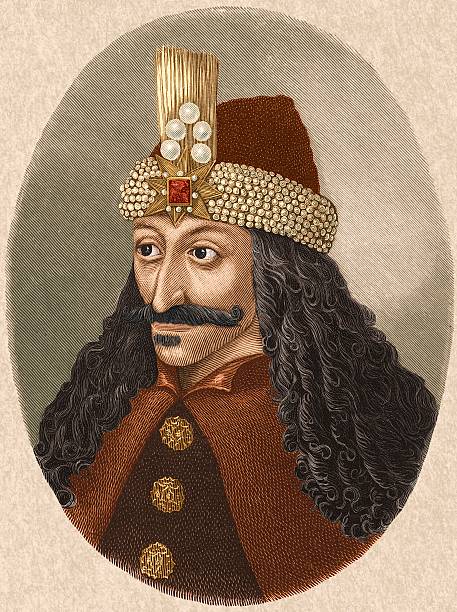
Vlad IV, Prince of Wallachia, the historic figure Bram Stoker used to craft his vampire count; both he and Lugosi were born in Transylvania
Other asteroids of significance in his life include Stokes, for Stoker, Dracula’s creator; Brown, for Tod Browning, Lugosi’s director in that film; and Transylvania, Dracula’s homeland. Stokes at 21 Libra conjoins Vampilov and more broadly conjoins the Sun, while exactly squared Drago, perfect for the author who first linked vampires with sex, in the person of Dracula; Stokes on the Sun signifies the importance of Stoker’s work for Lugosi’s biography. Brown at 1 Libra is trine the Moon and sesquiquadrate Neptune, ruling films, at 17 Taurus. Transylvania at 0 Cancer conjoins Jupiter at 1 Cancer, bringing fame and recognition to Lugosi. It also squares Brown, and is thus semisquare Neptune, but more importantly, is approaching station. Turning retrograde ten days after Lugosi’s birth, a degree later in the zodiac, a stationary Transylvania shows the pivotal importance of that locale to Lugosi, not only as the residence of his most famous character, but his own birthplace as well.
Lugosi was married five times; four of these unions ended in divorce. His first two wives were both named Ilona (Szmick and von Montagh), and those marriages lasted three years apiece; the third, to Beatrice Weeks, was only four months in duration, while the fourth, with Lillian Archer, lasted the longest, twenty years, but also fell apart. Lugosi was married to Hope Lininger, a former fan 37 years his junior, when he died.
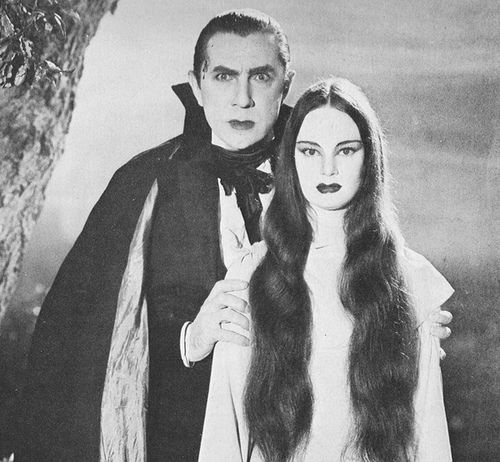
Lugosi with co-star Carol Borland in “Mark of the Vampire”; not truly undead, they were only playing the part to trap a murderer
The importance of marriage in his life is foreshadowed by asteroid Juno, named for the Roman goddess of marriage, at 23 Capricorn, in square to the Sun, but even more so by asteroid Hera, Juno’s Greek antecedent, which at 22 Gemini is not only exactly on the IC, lending angular force and power, but is also stationary, indicating a prominent role in his biography. Hera turned retrograde two days before his birth. Broadly within orb is asteroid Beatrix, for Beatrice Weeks, his third wife, at 13 Gemini. Beatrix is also exactly squared the Ascendant/Descendant axis of 13 Pisces/Virgo, with the Descendant symbolizing partnerships.
Asteroid Ilona, for his first two wives, appears at 28 Leo, opposing Aphrodite, goddess of love, at 26 Aquarius, but with asteroid Nemesis, that point of undoing, right next door at 27 Leo, perhaps dooming these unions from the start. These were early, youthful marriages, likely undertaken for Aphrodite’s carnal purposes, so it’s not surprising to see them come to grief, despite Ilona’s sextile to Hera and inconjunct to Juno.

Lugosi instructs his suck-up servant, werewolf Andreas, to do his bidding, in “Return of the Vampire”
Lillian Arch, the most durable of Lugosi’s unions, is represented by asteroid Lilliana, which at 0 Gemini closely conjoins Pluto at 29 Taurus. This spells resilience and a transformative role in his life, but was also the break-up which probably damaged Lugosi the most, as she was the mother of his son and had an extramarital affair, betrayal being another of Pluto’s hallmarks.
Fifth wife Hope Lininger is represented by asteroid Hopi, which at 18 Virgo conjoins Bella, but also asteroid Lachesis at 14 Virgo, named for the Greek Fate who determines the span of life. It may just be a coincidence that he was married to Hope when he died; and then again, it may not.
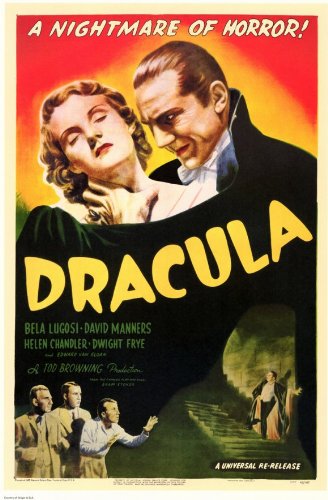
1931’s “Dracula” opened near Valentine’s Day, and was billed as a love story, “the strangest passion the world has ever known”
When “Dracula” premiered on 12 February 1931 in New York City (nationwide release came two days later, on Valentine’s Day, with promotion of the film as “the strangest passion the world has ever known”), Lugosi was personally highlighted. Asteroid Bella at 21 Leo opposes the transit Sun at 23 Aquarius, which also squared natal Saturn, his career, at 24 Taurus. With Bella is asteroid Manhattan, for the premiere’s venue, at 23 Leo. Asteroid Lugosi at 13 Aquarius is just on the outer edge of the Sun’s orb of influence, but closely squared Drago at 15 Scorpio.
Asteroids Stokes and Brown, for the book’s author Stoker and the film’s director Browning, are running together at 20 and 29 Sagittarius, straddling Lugosi’s career-minded MC at 22 Sagittarius. Asteroid Blazhko, for Lugosi’s birth name of Blasko, falls at 2 Capricorn, conjunct Venus at 6 Capricorn, perhaps indicating Lugosi’s popularity with women. It is also conjunct Brown, trine film-ruling Neptune at 4 Virgo and opposing that Transylvania/Jupiter conjunction in the natal chart. Incredibly, transit asteroid Transylvania is once again at station! Turning direct at 23 Gemini on February 3rd, Transylvania is exactly trined the transit Sun, opposed both Stokes and Brown; it is also tightly aligned with Lugosi’s natal MC/IC axis, and squared natal Bella at 20 Virgo.
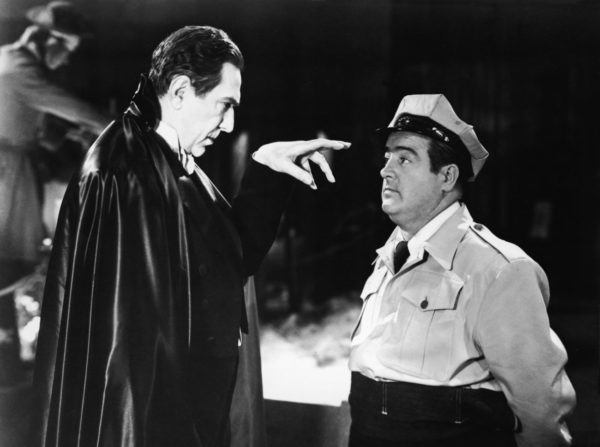
Lugosi spoofed himself later in life; here he is mesmerizing Lou Costello in 1948’s “Abbot and Costello Meet Frankenstein”
Mercury and Mars oppose each other from 1 Aquarius and 1 Leo respectively, cementing that sexually alluring vocal quality granted by their conjunction in the birth chart, bringing it to full flower. If the “new moon” quality of their natal conjunction represents potential, it is this “full moon” oppositional stance which conjures fruition of that. Pluto and Vampilov conjoin at 19 and 24 Cancer, uniting the themes of sex, death and taboo with romance, vampire-style.
When Bela Lugosi died on August 16th, 1956, the Sun at 23 Leo was exactly opposed its position for his greatest triumph, the “Dracula” premiere, and approaching natal Nemesis at 27 Leo, squared natal Saturn, ancient lord of death, at 24 Taurus. The Sun was also approaching its annual conjunction with Pluto, modern lord of death, at 28 Leo.
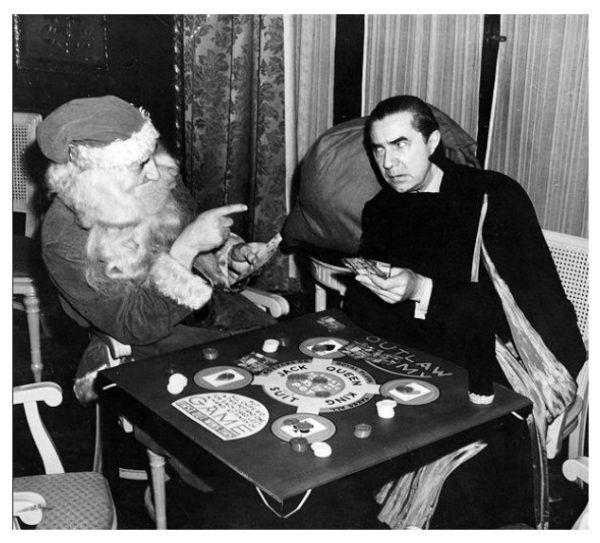
Lugosi was reduced to self-lampoon, donning his Dracula drag for store openings and low-budget TV guest spots, like this appearance with Santa Claus
Asteroids Blazhko and Anubis (death, funerals) were exactly conjunct at 29 Gemini, on Lugosi’s natal IC, while transit Bella at 28 Libra was exactly conjoined Neptune, the pair exactly sextile Pluto, symbolizing the death (Pluto) of film star (Neptune) Lugosi (Bella). Transit asteroid Lugosi at 13 Gemini was exactly T-Squared Lugosi’s natal Ascendant/Descendant axis, and squared transit asteroid Osiris, named for the Egyptian god of the dead, at 18 Pisces, on Lugosi’s Ascendant.
Asteroid Atropos, named for the Greek Fate who severs the thread of life at death, and Rip, a common indicator of death via the associated acronym “RIP” (“Rest In Peace”), are both at station, and turned retrograde together on the same day, August 21st, just five days after Lugosi’s death. At the time Rip at 15 Aries was conjunct natal Lugosi, and Atropos at 24 Aries was trined the transit Sun and Pluto, opposing transit Bella/Neptune.
Transylvania is again prominent, this time exactly conjoined transit Mars at 23 Pisces, exactly inconjunct the transit Sun and squared Lugosi’s natal MC, a final reminder of the importance of that locale to his career. Asteroid Drago, for Dracula, is at station from 0 Taurus, semisquare transit Lugosi and opposing Bella, bringing together both Lugosi’s names with the character he so famously portrayed. Drago is also squared transit Lachesis (lifespan) at 7 Aquarius, ending the life of the actor most identified with the role up to that time; arguably, for all time. (Lugosi’s chief competition for that honor, British actor Christopher Lee, took his first turn as the undead bloodsucker two years later.)
Sadly, Bela Lugosi never earned an Oscar. But his name is inextricably linked with the Academy Awards, in the form of Martin Landau, who won Best Supporting Actor for his portrayal of Lugosi in 1994’s “Ed Wood.” Oddly, Lugosi has asteroid Oskar at 8 Scorpio, conjunct Blazhko, an interesting placement for a victory brought home by a biographical role. Lugosi’s natal asteroid Landau at 23 Sagittarius closely conjoins his natal MC, while natal asteroid Martina (for Martin) at 25 Libra is with the Sun, enabling Martin Landau to mirror Lugosi (Sun) and posthumously bring him some degree of the professional recognition (MC) from his peers he lacked in life.
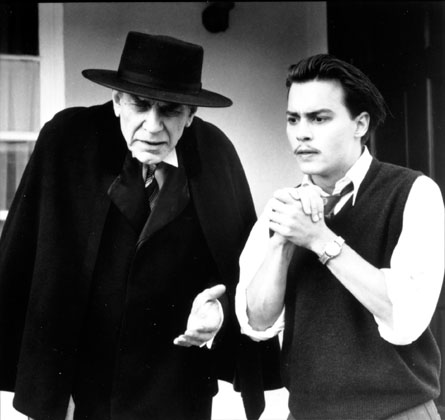
Martin Landau won an Oscar for his portrayal of Lugosi in 1994’s “Ed Wood”; he had asteroids Bella and Lugosi opposed in his birth chart
Landau’s bona fides for the part are undoubted. Born 20 June 1928, Landau sports a remarkable opposition in his birth chart, from Bella at 15 Scorpio to Lugosi at 19 Taurus. These are semisquare and sesquiquadrate to natal Actor at 2 Cancer (itself conjunct the 28 Gemini Sun), with Bella also sesquiquadrate the Sun, allowing Landau to reach deep within to extract an authentic portrayal of the character, based on his own core being. When the Oscars were awarded at the 67th Academy Awards ceremony on 27 March 1995, transit asteroids Martina and Bella were conjunct, at 14 and 17 Gemini, further cementing the symbiotic relationship between Lugosi and Landau, with Bella exactly sextile transit Victoria, named for the Roman goddess of victory, at 17 Leo, bringing home the win.

Lugosi’s grave makes no mention of the role that made him famous, but the question remains: is he actually in there?
Bela Lugosi’s contribution to cinematic horror in general, and the vampire genre specifically, cannot be overstated. He flashed no fangs, visibly bit no necks, bloodied no torsos, but his suave, debonair yet erotic performance set the tone for countless films to come. If vampires have sex appeal, they owe much of that to Lugosi.
So this Halloween season, raise a glass of a fine Hungarian red in Lugosi’s honor; but remember – Dracula never drinks … wine.
